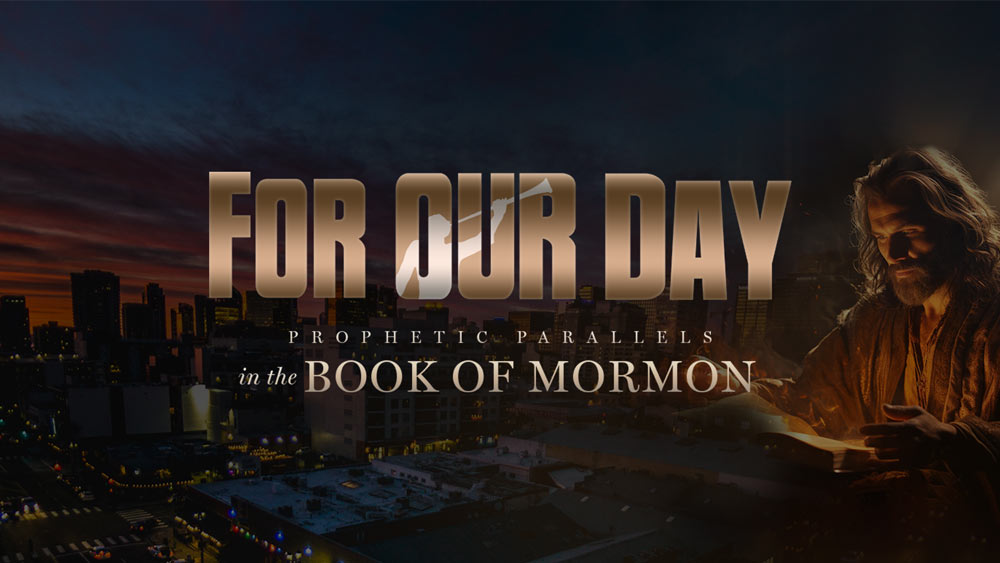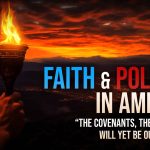Prophetic Statements
Heber J. Grant
Our primary purpose was to set up, in so far as it might be possible, a system under which the curse of idleness would be done away with, the evils of a dole abolished, and independence, industry, thrift, and self-respect be once more established amongst our people. The aim of the Church is to help the people to help themselves. Work is to be re-enthroned as the ruling principle of the lives of our Church membership.1
The Church aims to help provide for the care and sustenance of those on direct relief — federal, state, and county, as also for those for whom the Church has heretofore cared. The exact number of such persons cannot now be certainly given but there may be as many as fifteen thousand. We have strongest reasons for believing we shall be able to give these the aid they need.2
We are attempting to get our people not to be satisfied to take charity, if it is possible for them to earn their own living, and even to be ready and willing to make some sacrifice, even though they might be offered a little more in charity than they could earn themselves; we do want them to earn what they receive.3
Harold B. Lee
We had been wrestling with this question of welfare [1935]. . . . We had only one place to go, and that was to apply the Lord’s program as set forth in the revelations. . . . The First Presidency called me one morning asking if I would come to their office. . . . they wished me now to head up the welfare movement to turn the tide from government relief, direct relief, and help to put the Church in a position where it could take care of its own needy. After that morning I rode in my car . . . up to the head of City Creek Canyon . . . and there I offered up one of the most humble prayers of my life. . . . As I kneeled down, my petition was, “What kind of organization should be set up in order to accomplish what the Presidency has assigned?” And there came to me on that glorious morning one of the most heavenly realizations of the power of the priesthood of God. It was as though something were saying to me, “There is no new organization necessary to take care of the needs of this people. All that is necessary is to put the priesthood of God to work. There is nothing else that you need as a substitute.”4
It was on April 20, 1935, that I was called to the office of the First Presidency. That was a year before official announcement of the welfare plan was made in this tabernacle. There . . . I was astounded to learn taht for years there had been before them, as a result of their thinking and planning and as the result of the inspiration of Almighty God, the genius of the very plan that is being carried out and was in waiting and in preparation for a time when, in their judgement, the faith of the Latter-day Saints was such that they were willing to follow the counsel of the men who lead and preside in this church.5
It was August of [1935] . . . There came to me, in that early morning hour, a distinct impression that was as real as though someone had spoken audibly, and this was the impression that came and has stayed with me through these years: There is no individual in the Church who knows the real purpose for which the program then launched had been intended, but hardly before the Church has made sufficient preparation, that reason will be made manifest; and when it comes, it will challenge every resource of the Church to meet it. I trembled at the feeling that came over me. Since that day that feeling has driven me on, night and day, hardly resting, knowing that this is God’s will, this is His plan.6
The Church welfare plan . . . was given to the Church by our leaders as they were inspired by the Lord. The activities of the welfare plan have provided the greatest opportunities for spiritualizing this church that perhaps have ever been given this people in our generation, as as we have watched it unfold and its purposes be more fully revealed, we have come to see therein a building for not onlyt the temporal salvation but also the spiritual salvation of the Church as well.7
This welfare [plan] . . . has been given to this church in this day as an inspiration that came from the man whom the Church sustains today as its prophet, seer and revelator, and it is obligatory upon the Church to give heed to the program as it has been or as it may be developed if they would obtain the blessings of peace and temporal safety in this day of turmoil. . . . President Wilford Woodruff prophesied years ago, “So far as temporal matters are concerned, we have got to go to work and provide for ourselves . . . We will be preserved in the mountains of Israel in the day of God’s judgement. I therefore say to you, my brethren and sisters, prepare for that which is to come.”8
We have come to a day when the way of the Lord, as he described it, would be applied when the poor would be exalted, or in other words stimulated to success and pride, and uplifted because the rich have been made low–or in other words, because the rich have been made humble and willing to give of their substance, their time, their talents, their wisdom, and their example that the poor might be thus guided and directed. I have seen teamwork and cooperation grow, and I have seen the priesthood take its place in blessing this church temporally and spiritually in a most glorious way.9 10
The principles on which [the welfare program] is based were not new or experimental even in the beginning. In the earliest of revelations given to the Church in this dispensation, the Lord made known His will concerning the economic laws which, if obeyed and properly applied, would solve the ills that afflict mankind and would relieve the distress and suffering among a large group of our Father’s children known as the “poor and needy.”
The experimentation has been rather with the membership of the Church to see how strongly they can be united together in a program that calls for a daily testing of their unselfishness, their devotion to duty, and their faith in the divine appointment of the present leaders of the church.11
There have been many who have asked questions concerning what the Church hoped in the ultimate to achieve in this Church Security [welfare] program, so-called. There have been those who have understood that in this movement it was the hope of the Church to take all its members who are now on government relief and place them on Church relief. May I say that the objective is more far-reaching than that. The hope of the Church in this movement is to take faithful members of the Church, who are now receiving public assistance either from the government or from the Church, and lead them if possible toward a day of permanent security. As far-reaching and grandly conceived as that objective may be, that is the objective of the Church today. Yes, one of the objectives of the restoration of the gospel of Jesus Christ, established upon the earth in the last days.12
The Lord has given us the solution to economic problems. . . . Not only has the Lord given us the plan to follow, but He has given us in the revelations one of the basic, if not the most basic, reasons for the ills that beset mankind. This is what the Lord said—and I suppose as you understand this you will recognize in it the reason for selfishness and for jealousies that develop into bitterness and hatred, and finally into war and bloodshed. Here is the simple statement of the Lord: “But it is not given that one man should possess that which is above another, wherefore the world lieth in sin”13
While the world today is groping for a solution (and some of our people, I am afraid, have the mistaken notion that they must look to some development of the philosophies of men in this nation or copied from nations abroad to solve present problems), the Latter-day Saints should never lose sight of the fact that for over one hundred years the Lord has given us the way and the plan by which might come the solution of all the economic problems of this day quotes14 15
I have remembered a statement that was made by an official of the United States Steel Corporation after I had spent an hour or two at Welfare Square with him and a group of officials from his company. He said, “This is a practical demonstration of the gospel of Jesus Christ, in giving aid to the needy and the less fortunate.” That was a new concept to me, that in the welfare program we were standing as witnesses before the world of the divine way by which the Lord’s work is to be done.16
Ezra Taft Benson
The Lord is not unmindful of the temporal salvation of His Saints. Some of us saw the welfare program developed from its inception. The full purpose and intent of this inspired program has hardly been realized, and when we have passed through some of the tribulations that are in store for the world, we will see that this inspired plan was necessary to bring the Church to a condition of independence. The Church must become independent of the world-or, in other words, wholly self-sufficient. I quote from the revelation which established the united order in the early days of the Church, a revelation still awaiting fulfillment:
For verily I say unto you, the time has come, and is now at hand; and behold, and lo, it must needs be that there be an organization of my people, in regulating and establishing the affairs of the storehouse of the poor of my people, both in this place and in the land of Zion—That you may come up unto the crown prepared for you, and be made rulers over many kingdoms.17
Apparently, there will be certain tribulations that will disrupt the nations of the world to the extent that the Church will have to be self-reliant.18
The principles of self-help are economically, socially, and spiritually sound. The Lord will not do for us what we can and should do for ourselves. But it is the Lord’s purpose to take care of His Saints.19 Everything that concerns the economic, social, and spiritual welfare of the human family is and ever will be the concern of The Church of Jesus Christ of Latter-day Saints.20
Opposing Statements
Scripture
Supporting Statements
- Heber J. Grant, Conference Report, October 1936:3. ↩︎
- Heber J. Grant, Conference Report, October, 1936:3; also Gospel Standars, p. 124. ↩︎
- Heber J. Grant, Relief Society Magazine, 25:12; also Gospel Standards, p. 124. ↩︎
- Harold B. Lee, Conference Report, October 7 1972; The Teachings of Harold B. Lee, p. 300-301. ↩︎
- Harold B. Lee, Conference Report, April 6 1941, pp. 119-122; The Teachings of Harold B. Lee, p. 302. ↩︎
- Harold B. Lee, Conference Report, April 6 1941, pp. 119-122; The Teachings of Harold B. Lee, p. 301. ↩︎
- Harold B. Lee, Conference Report, April 6, 1942, pp. 85-87; The Teachings of Harold B. Lee, p. 302. ↩︎
- Wilford Woodruff, Millennial Star, 56 [October 8, 1894]: 644) (Harold B. Lee, The Teachings of Harold B. Lee, pp. 303-304; Church News, March 1 1941, pp. 4, 7. ↩︎
- D&C 104:16. ↩︎
- Harold B. Lee, The Teachings of Harold B. Lee, p. 311; Conference Report, October 5, 1941, pp. 110-116. ↩︎
- Harold B. Lee, The Teachings of Harold B. Lee, p. 311-312; Church News, December 20, 1947, p. 7. ↩︎
- Harold B. Lee, The Teachings of Harold B. Lee, p. 313. ↩︎
- D&C 49:20. ↩︎
- D&C 82:14-19. ↩︎
- Harold B. Lee, The Teachings of Harold B. Lee, p. 316; Conference Report, October 5, 1941:110-116. ↩︎
- Harold B. Lee, The Teachings of Harold B. Lee, p. 321; Conference Report, April 6, 1951, pp. 31-35. ↩︎
- D&C 78:3, 14-15. ↩︎
- Ezra Taft Benson, The Teachings of Ezra Taft Benson, p. 260; Salt Lake City, Utah, 6 June 1980. ↩︎
- D&C 104:15. ↩︎
- Ezra Taft Benson, The Teachings of Ezra Taft Benson, p. 263; So Shall Ye Reap, pp. 278-79. ↩︎







